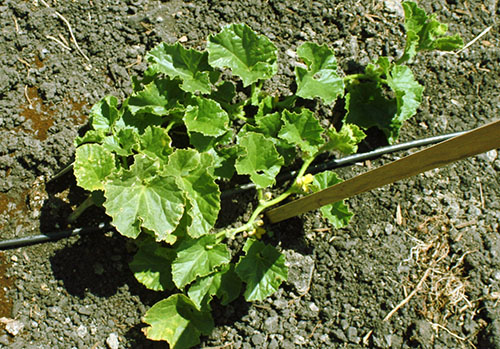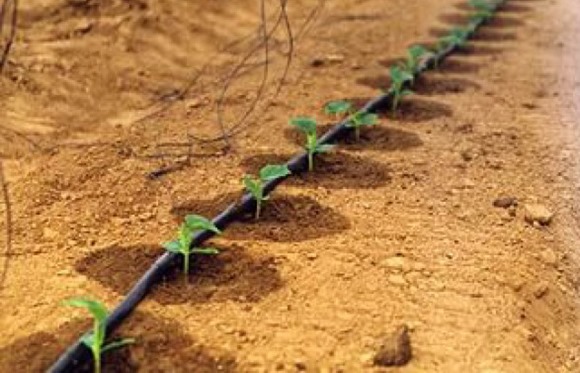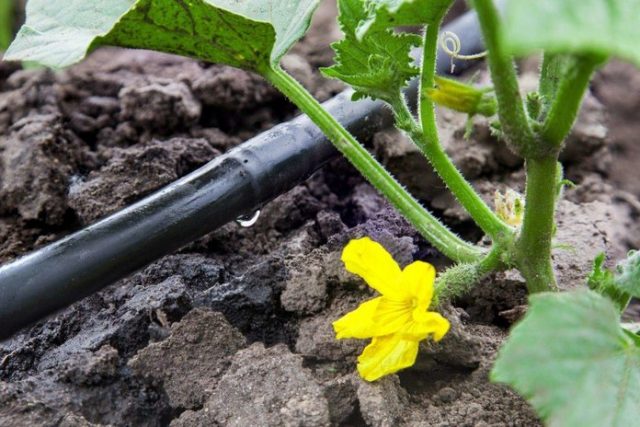Content
Growing a sweet melon somewhere in the suburbs is already the ultimate dream of every self-respecting summer resident. And in other regions, many dream of a rich harvest of juicy honey, emitting a dizzying aroma, fruits. But melon is a very controversial culture. Growing from time immemorial in a hot semi-desert area, it, nevertheless, is very sensitive to water. If you water the melons incorrectly, then the harvest may not be at all, or the fruits will turn out to be of unsatisfactory quality.
How demanding a melon is to water
Everyone who has tasted melon at least once cannot but agree that it is a very juicy fruit. Its fruits are mostly liquid. Therefore, without a sufficient amount of water, it makes no sense to wait for a good harvest from a melon. Professional melon growers know this especially well. Indeed, in the south, on ordinary plots without irrigation, the yield indicators for melons of the same variety are usually two times lower than those where a system of additional irrigation is used.
On the other hand, with an excess of moisture, especially in conditions of insufficiently high temperatures, the root system of a melon is easily exposed to various diseases, simply put, it rotts. But even in the south, in the heat, too abundant watering can lead to the fact that the fruits lose most of their aroma and sugar content and turn out to be tasteless, just watery.
Therefore, when growing melons, it is especially important to comply with all the features of care and requirements for irrigation technology.
Watering rules for melons from sowing to ripening
Melon is usually attributed to the pumpkin family. But unlike its closest relatives, watermelon and pumpkin, its root system is much less developed. The main taproot goes to a depth of about 70-100 cm. There are also about 10-12 lateral roots, up to 2-3 m long, located mainly in the upper layers of the soil, at a depth of no more than 30-40 cm. It is due to their nutrition and the main crop of the plant is formed.
Typically, the watering regime of the melon and the amount of water used for this purpose is determined by the phase of plant development and the current weather conditions. But there are general rules for watering, the same for any conditions:
- Melons are poured with extremely warm water heated to + 22-26 ° C. Cold water can significantly slow down the growth and development of plants, in addition, cause the spread of root and stem rot.
- Since it is easiest to heat the water in the sun, it is customary to water the melons in the evening, after the sun has begun to decline. On especially hot days, it will be useful to arrange watering for them twice a day: in the morning and in the evening.Attention! The main thing is not to water in the midday heat, in bright sun, in order to prevent leaf burns.
- Melons, unlike most garden plants, do not like high humidity at all. Therefore, it is better to completely exclude the option of irrigation by sprinkling.
- On average, depending on the stage of formation of melon plants, one bush is used for irrigation from 3 to 8 liters of water.
- When watering, the ingress of moisture on the root collar of plants should be excluded, especially in the initial period of growth. This can cause it to rot. Usually a small space (15-20 cm in diameter) around the root collar of young plants is covered with coarse sand.
- After each abundant watering, and especially after heavy rain, it is advisable to feed the melons.
From planting to emergence
Melons can be grown both by direct sowing of seeds in the ground (mainly in the southern regions), and using seedlings at home. In favorable conditions (high temperature and humidity), melons in the initial period are characterized by high intensity of growth processes. Moreover, the root system grows and develops much faster than the ground part. So the seeds can germinate in 2-3 days, and seedlings appear only on the 8-9th day. For all these days, the root grows and develops intensively. By the time of emergence, it is able to reach a length of 15-20 cm and even have several lateral branches.
But if the seeds were placed in well-moistened soil and covered with glass or polyethylene on top to preserve moisture (in the open field with plastic bottles without a bottom), then no additional watering is required for melon plants before sprouting.
How to water young plants
As soon as the first true leaf appears in the emerging melon shoots, the first watering of the plants is carried out. Of course, if the weather is hot, dry and sunny, it is impossible to allow the topsoil to dry out during this period. This applies to both open ground and seedlings grown in separate pots.
Young melon plants form the root system most intensively in the first month of life. Leaves will grow rather slowly during this period, and therefore melon bushes can be watered directly into the hole next to the root with a thin stream of warm water.
Until the plant has two or three true leaves, watering one melon is unlikely to require more than 0.5-1 liters of water. But in each case, an individual approach is required, since irrigation rates are highly dependent on weather conditions, especially when it comes to open ground. It is equally important not to overdry or overflow the soil under the melons. Watering young melons should be regular and constantly monitored.
Watering the melon during flowering and ovary formation
Perhaps this is the most important and difficult period in the development of melons in terms of irrigation characteristics.
The plants are still quite young, so regular and fairly abundant watering is more important than ever. Each plant already requires at least 3 liters of water in one procedure.
With the appearance of the very first flowers, watering must be temporarily suspended. The fact is that the first to appear in the melon are male flowers, which are usually collected in inflorescences of several pieces. And only after a few days female flowers bloom - single, located mainly on the lateral shoots of the first orders. A temporary reduction in watering during the appearance of male flowers will stimulate the formation of female flowers. When the mass appearance of female flowers begins, watering is resumed again.
From this moment until the ovaries form, watering the melons should again be regular and abundant. It is necessary to constantly monitor the level of soil moisture. It should not dry out more than 5-6 cm in depth. And after the procedure, the ground should be soaked to a depth of 40-60 cm.
Watering melon plants at the root during this period is already highly undesirable. It is best to make small grooves in the aisles and fill them with water.
During this period, it is also important to promptly remove all excess vegetation around the bushes, the roots of which can take moisture from the melons. Loosening after watering also contributes to better absorption of moisture by the roots and prevents water from stagnating.
How to water melons during the growth and ripening of fruits
From the moment the ovaries form, the time of the most abundant watering of the melon comes. They should not be too frequent, but the ground should be well moistened. At one time, one melon bush can take from 5 to 8 liters of warm water.Watering should be, as in the previous period, in the grooves along the row spacing.
Much also depends on the weather conditions. Of course, during the rainy season, watering the melons should be minimized or postponed altogether.
But as the fruit grows and is poured, watering is gradually reduced. About a month before the melon is fully ripe, it is best to stop watering altogether. This will allow them to get the maximum amount of sugars. In addition, the preserved properties of melon fruits are also increased. Don't worry too much about the plants, even if the weather is dry and hot. Roots at a depth of about a meter will always find the moisture they need.
It is important to remember that all operations to reduce or increase irrigation should occur gradually. Since the most common mistake novice gardeners make is over-flooding after a fairly long drought. Melon fruits from this can begin to crack and rot. It is especially important to observe the correct watering regime in the period after the formation of ovaries.
Advantages of drip irrigation
Drip irrigation is of course the most versatile and most convenient watering system for melons. First of all, it allows each time to adjust and control the amount of water supplied for irrigation. This is especially true for those regions where there are problems with the norms of water used.
It is also important that with drip irrigation, water only wets the soil, without affecting or disturbing the leaves and the root collar of the bushes.
In addition, automatic drip irrigation will help you remember about the next procedure and save time and effort for other gardening activities.
Combining watering with top dressing
It is very convenient to combine top dressing with watering, first of all, because it saves time, effort and plants do not receive an excess of fertilizers.
The first top dressing is usually carried out by adding crystalon, kemira or ammonium nitrate to the water for irrigation about 8-10 days after mass germination. Usually in the instructions for these complex fertilizers there are norms for the consumption of dry matter per 10 liters of water. Water flow rate should be standard.
In the budding and flowering phase, a second addition to the water for irrigation of fertilizers can be carried out. During this period, it is best to use organics. It is diluted in a ratio of 1:10 or 1:15, depending on the condition of the plants.
After about 3 weeks, when the formed ovaries begin to grow, the last feeding of the melons is carried out. They use mainly phosphorus and potash fertilizers, diluting respectively 50 and 20 g in 10 liters of warm water.
Conclusion
Learning to properly water melons during different growing seasons is not a difficult task. But the result will be a great taste and enchanting aroma of fruits that have grown on their own site.













